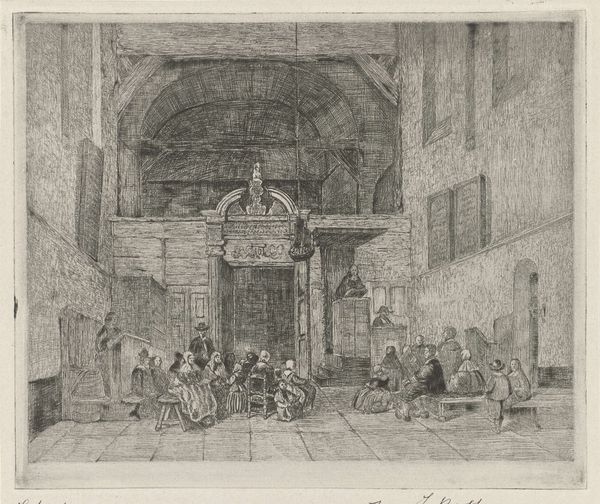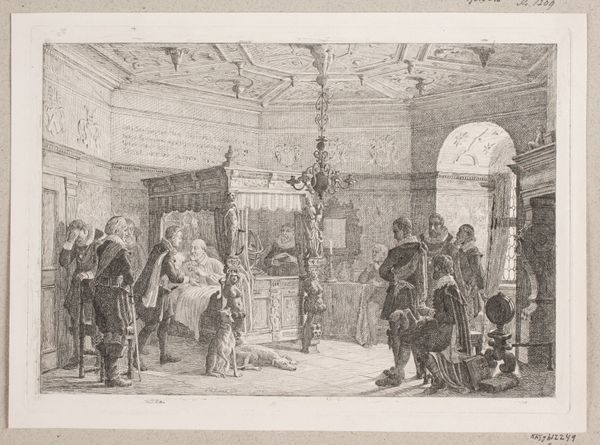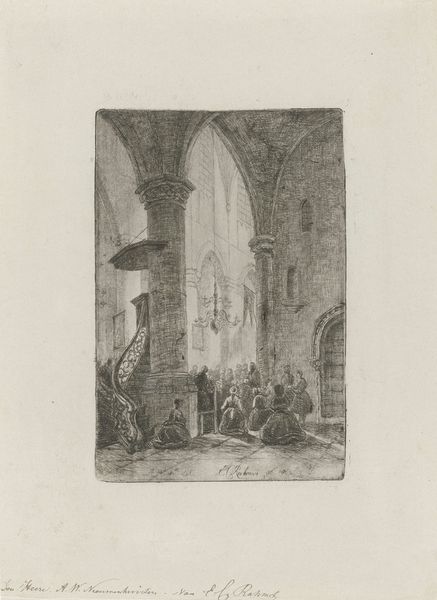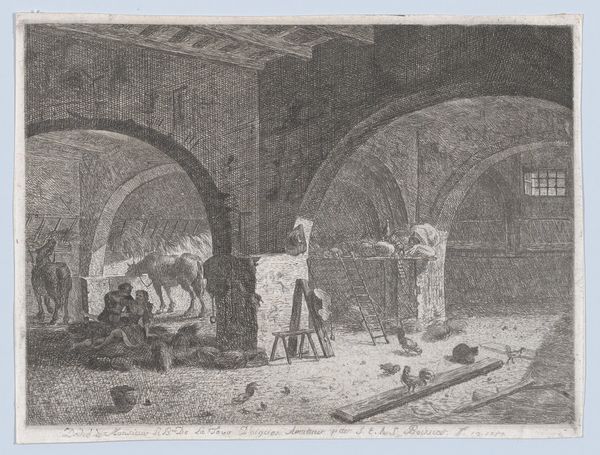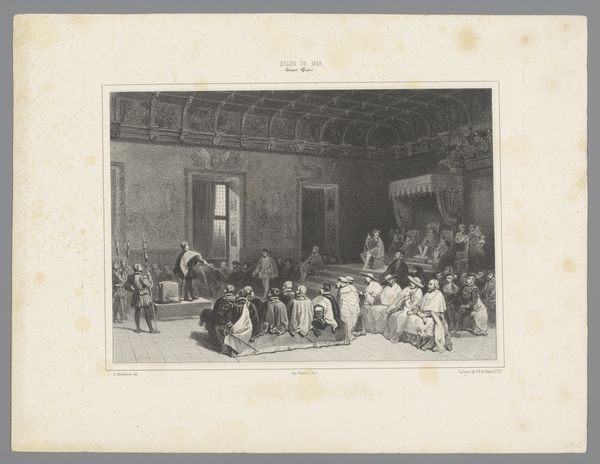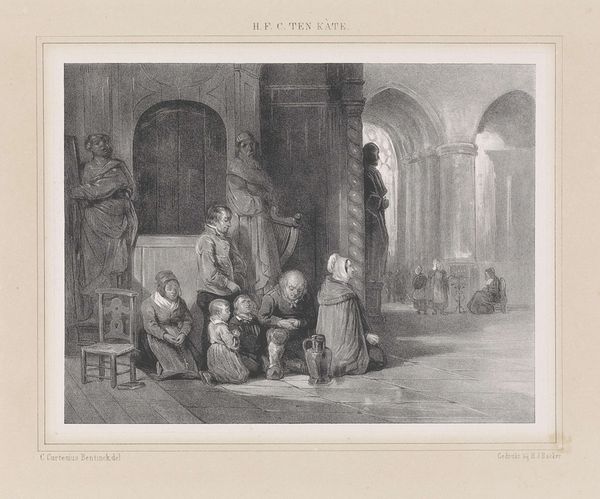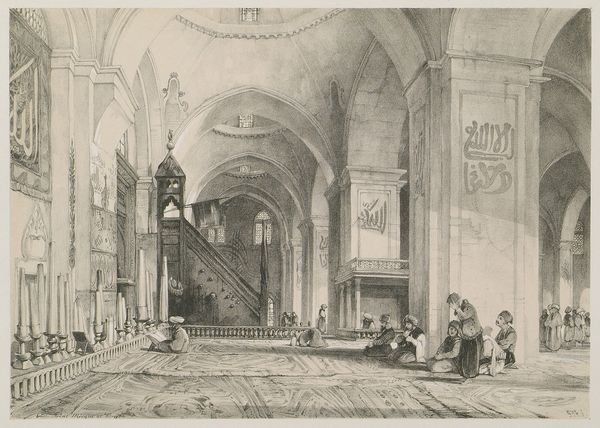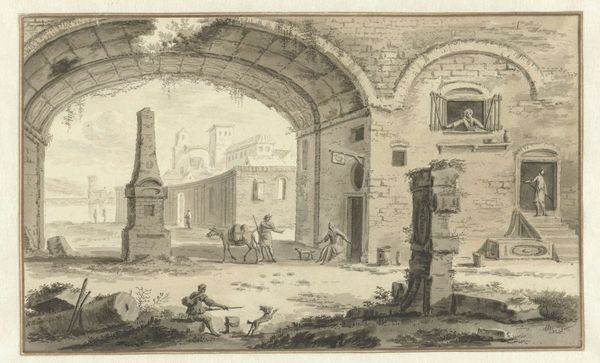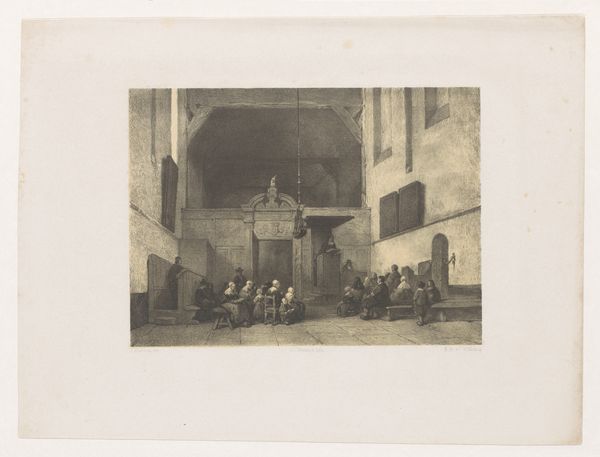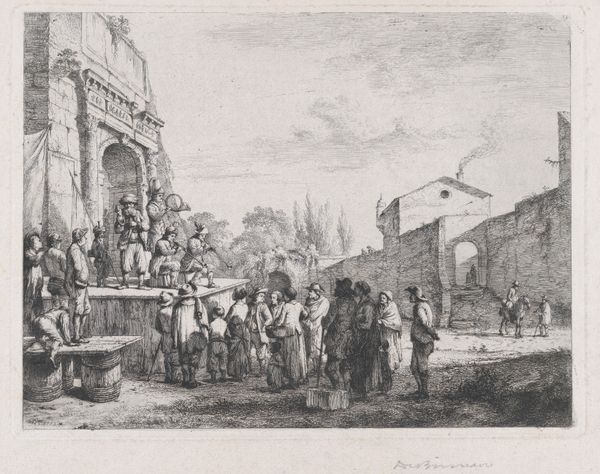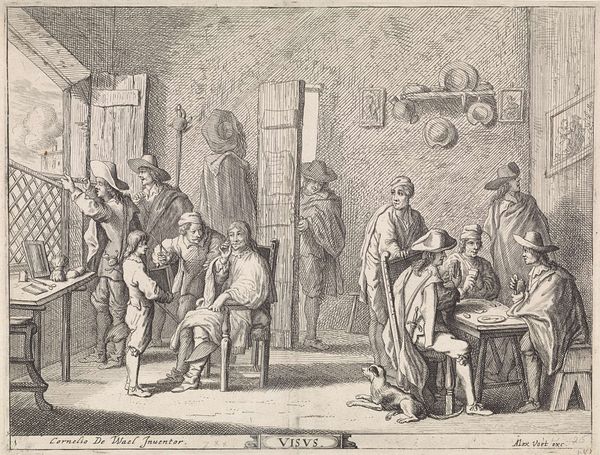
print, etching
# print
#
etching
#
old engraving style
#
genre-painting
#
realism
Dimensions: height 141 mm, width 168 mm
Copyright: Rijks Museum: Open Domain
Curator: Let’s turn our attention to “Kerkdienst in een dorpskerk,” which translates to "Church Service in a Village Church." Eberhard Cornelis Rahms likely created this etching sometime between 1833 and 1890. Editor: What strikes me immediately is the subdued atmosphere; it’s quiet and contemplative. There’s an intimacy to the scene, despite the grandeur implied by the church setting itself. Curator: Rahms has masterfully used the etching technique here. Notice how the lines vary in density and direction, creating textures and shadows that define the space and the figures within it. Look closely at the varied levels of craftsmanship; there’s skill at play in both the construction of the church and the depiction of the common folk gathered for worship. Editor: The architecture is loaded with symbolic meaning, especially if this is the main church in the town; the light streaming inward makes that main arched entrance act as a portal, symbolically emphasizing access to divinity, for all community members. Curator: It's interesting you interpret the image this way! From my view, focusing on the materiality of religious practice invites us to think about how shared belief intersects with communal spaces. This image captures how these elements converge to shape a sense of collective identity and experience. Editor: Absolutely, I see that point. And consider how these depictions are imbued with socio-religious codes reflecting this era’s social and spiritual anxieties. Are those communal identities based on sincere conviction, or something more performative or obligatory? It’s hard to say for certain from looking at a simple etching, though. Curator: Indeed. The print functions as an efficient, reproducible artifact; in contrast to painting, we are not focusing on a singular aesthetic genius here but mass production in service to broad distribution, reflecting on consumption patterns of the era and highlighting new access to a representation of communal identity and space. Editor: Fascinating how different contexts impact how we assess images. Ultimately, I suppose these different contexts inform how the etching participates in dialogues on belief, and community—conversations that are just as vital today. Curator: I think I agree, yes; I feel the material circumstances can allow for unique perspectives regarding how art affects our collective values and experiences, though, ultimately!
Comments
No comments
Be the first to comment and join the conversation on the ultimate creative platform.
